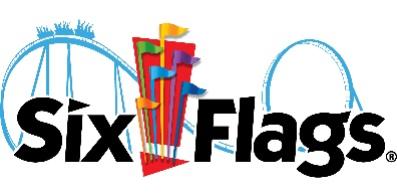The $64 million decrease in revenue was driven by a $34 million reduction in sponsorship, international agreements, and accommodations revenue, primarily related to the termination of the company’s contracts in China and Dubai in 2020 and 2019, respectively; and a reduction in sponsorship revenue and accommodations revenue due to the pandemic. Excluding sponsorship, international agreements, and accommodations revenue, total revenue declined by $30 million or 5%. The decrease was a result of lower attendance, net of the attendance increase related to the fiscal quarter reporting change, partially offset by higher guest spending per capita.
The company partially offset the decrease in revenue with lower operating costs. The reduction in operating costs reflected cost savings measures during the first six months driven by the company’s transformation plan, lower advertising costs, a benefit from the proceeds received in connection with one of its terminated international development agreements in China, and lower salaries, wages and benefits due to the fact that several of the company’s parks that were operating in first quarter 2019 were not operating in first quarter 2021. In the second quarter, wage rate increases and higher incentive costs to attract and retain team members were partially offset by fewer total employee hours worked due to the tight labor market.
Total guest spending per capita in first half 2021 increased 21% compared to first half 2019. Applying the pro forma allocation from Admissions spending to In-park spending in 2019, Admissions spending per capita increased 22% and In-park spending per capita increased 20%. The increase in Admissions spending per capita was driven by the company’s revenue management initiatives and a shorter average season for 2021 season passes versus 2019. Most 2021 season passes have been sold later in the season than in 2019, resulting in season pass revenue being recognized over a shorter time frame and higher Admissions spending per capita. The increase in In-park spending per capita was due to early progress on several of the company’s transformation initiatives and strong consumer spending trends.
Active Pass Base
The company extended the use of all 2020 season passes through the end of 2021 and offered members the option to pause payments on their membership through the time their respective home park opened in 2021. The company also offered higher-tiered benefits to members that elected to maintain their payment schedule instead of pausing. The company also began selling a significant number of season passes and memberships as its parks reopened in 2021. As a result of these retention and sales efforts, the Active Pass Base increased 65% as of the end of second quarter 2021 compared to second quarter 2020 and increased 2% compared to second quarter 2019. Due to the change in the reporting calendar, second quarter 2021 ended on July 4 instead on June 30, as it did in 2019 and 2020. As of June 30, 2021, the Active Pass Base was essentially flat compared to June 30, 2019. The Active Pass Base of 6.3 million included 2.1 million members as of the end of second quarter 2021, compared to approximately 2.1 million at the end of second quarter 2020 and 2.7 million members at end of second quarter 2019, with almost no members continuing to pause their payments. The Active Pass Base also included 4.2 million traditional season pass holders at the end of the second quarter 2021 compared to 1.7 million season pass holders at the end of second quarter 2020 and 3.5 million season pass holders at the end of second quarter 2019.
Deferred revenue was $310 million as of July 4, 2021, an increase of $75 million, or 32%, from June 30, 2019. The increase in deferred revenue was primarily due to increased sales of season passes and memberships in second quarter 2021 compared to the same period in 2019, and the deferral of revenue from members and season pass holders whose benefits were extended through 2021.
Balance Sheet and Liquidity
As of July 4, 2021, the company had cash on hand of $253 million and $461 million available under its revolving credit facility, net of $20 million of letters of credit, or total liquidity of $714 million. This compares to $524 million of liquidity as of April 4, 2021. The company’s net cash flow was $190 million for second quarter 2021.
For first half 2021, the company invested $42 million in new capital projects. Net debt as of July 4, 2021, calculated as total reported debt of $2,626 million less cash and cash equivalents of $253 million, was $2,373 million.
On August 26, 2020, the company amended its credit facility to, among other benefits, suspend testing of its senior secured leverage ratio financial maintenance covenant through December 31, 2021. The company’s lenders also approved modified testing of its senior secured leverage ratio financial maintenance covenant
